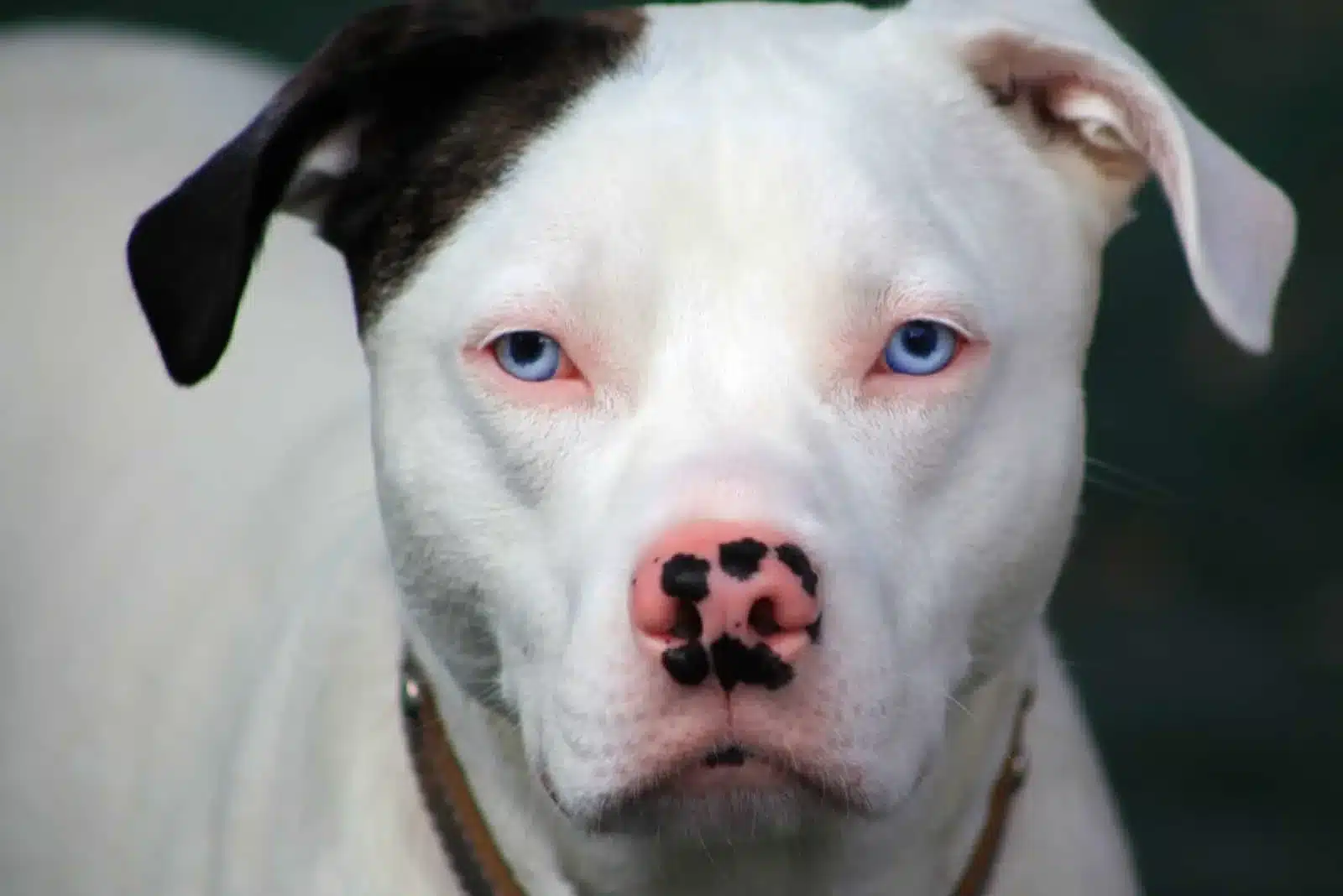Vitiligo in Animals: When Animals Suddenly Lose Their Colors
Ads Disclosure ?
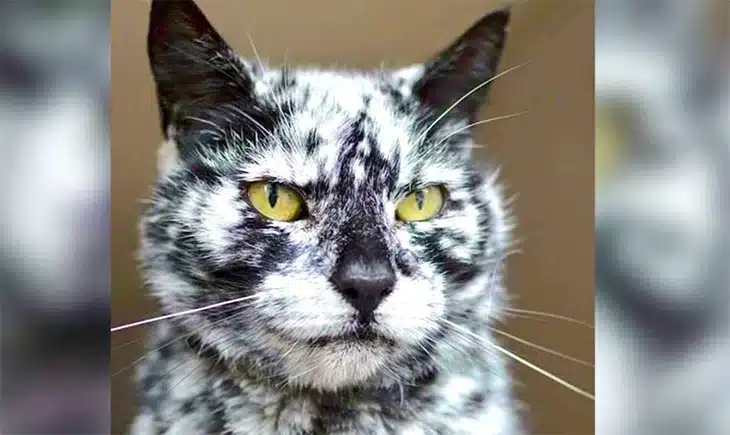
Vitiligo is a condition characterized by the loss of pigment in the skin and hair, leading to the appearance of white patches on the body. The loss of pigment cells, or melanocytes, causes the distinctive white patches, which may appear as isolated spots or larger generalized areas. In many cases, the result is an animal with a very unusual appearance.
While commonly discussed in relation to humans, this condition is not exclusive to humans and can affect a range of animal species, including dogs, cats, and horses – and even giraffes and leopards!
Though the underlying cause of vitiligo is still unclear, it is generally considered to be an autoimmune disorder. Treatment approaches can vary widely and are still being developed, with the primary goal being to arrest the progress of depigmentation and offer supportive care as needed.
Jump To Section
Understanding Vitiligo
Definition and Symptoms
Vitiligo is a disorder that causes animals (and humans) to develop depigmented patches on their skin and/or fur, resulting from the loss of melanocytes, the cells responsible for producing pigmentation. The primary symptom includes irregularly shaped white spots that progressively expand over time.
Animals may exhibit patches of white hair or areas of skin that have lost their color, often without any signs of skin irritation or discomfort.
In some animals, the depigmentation might affect the eyes or nails, but it does not interfere with their function. The condition can appear in association with old age or spontaneously
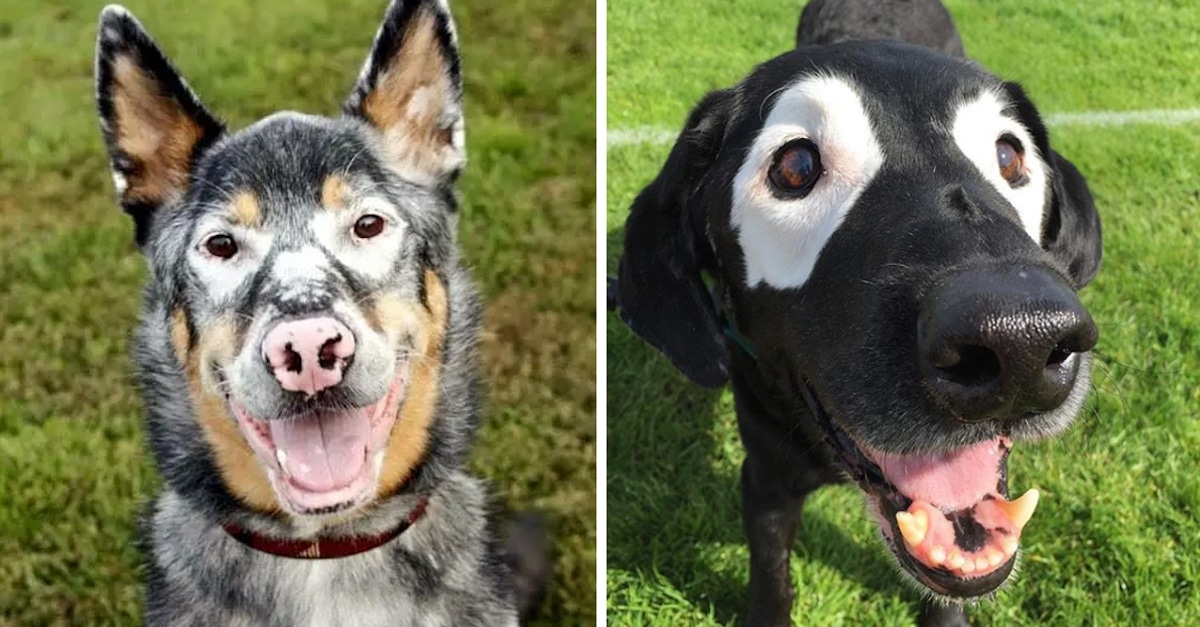
Causes and Genetic Factors
The exact cause of vitiligo remains uncertain at this time, but it is frequently regarded as an autoimmune disease, in which the animal’s immune system mistakenly attacks the melanocytes.
Genetic factors also play a role, with some cases of vitiligo appearing to be hereditary. For instance, vitiligo is best recognized in Arabian horses, potentially associated with the condition known as Arabian fading syndrome or pinky syndrome.
The condition is also familiar in certain cattle breeds like Holstein-Friesians, and in certain breeds of dogs, like Belgian Tervurens and Rottweilers, suggesting a potential genetic predisposition.
Types of Vitiligo
Vitiligo is generally classified into two types, distinguished by their patterns of depigmentation:
- Generalized Vitiligo: The most common form where symmetrically distributed depigmented areas appear on various parts of the body.
- Focal Vitiligo: Less common, with depigmentation being restricted to one or few areas.
Each type impacts the appearance of affected animals differently and can have unique considerations for diagnosis and study.
Some animals, like the Smyth line chicken or Gray-allele horses, exhibit naturally occurring vitiligo, providing researchers with models to further understand the pathophysiology of the condition.
Vitiligo in Different Animal Species
Vitiligo in Dogs
Different dog breeds can display symptoms of vitiligo, where patterns of depigmentation vary. Early signs can be subtle, with the onset of the condition often being gradual. It begins as small spots of whitening fur that increase in size over time.
The condition doesn’t cause any physical discomfort to the dog and is not harmful, although sun protection may become necessary due to the lack of melanin.
Common Breeds Affected: The incidence of vitiligo is more frequent in certain dog breeds, each with varying patterns and onset of symptoms.
- Rottweilers: Might exhibit signs of vitiligo with age.
- Belgian Tervuren: Often develop characteristic white patches on their face and body.
- German Shepherds: Can display patchy depigmentation, typically around the face.
- Doberman Pinschers: Known to be affected, showing whiteness especially on their snouts.
- Old English Sheepdogs and Dachshunds: Also report occurrences of vitiligo, leading to a mottled appearance.
- Some sporting breeds like the German Shorthaired Pointer also experience this condition.
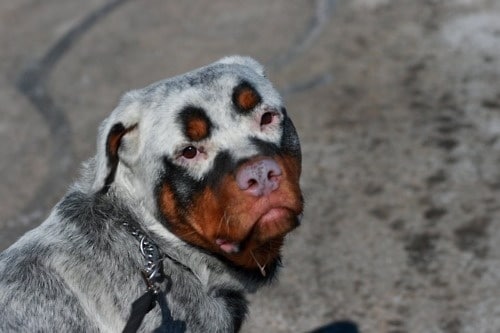
Vitiligo in Cats
Siamese cats may be more prone to vitiligo, which may manifest as a “snowflake” or “cobweb” pattern. Unlike other feline health issues, vitiligo does not cause discomfort or harm beyond the cosmetic changes it causes.

Vitiligo in Horses
Vitiligo can also affect horses, with patches often most noticeable around the muzzle, eyes, and genitalia (but they can appear anywhere on the body).
Equine vitiligo, sometimes recognized as a familial disease, particularly in Arabian horses, can present as distinct depigmented patches or more diffuse areas of lighter skin.
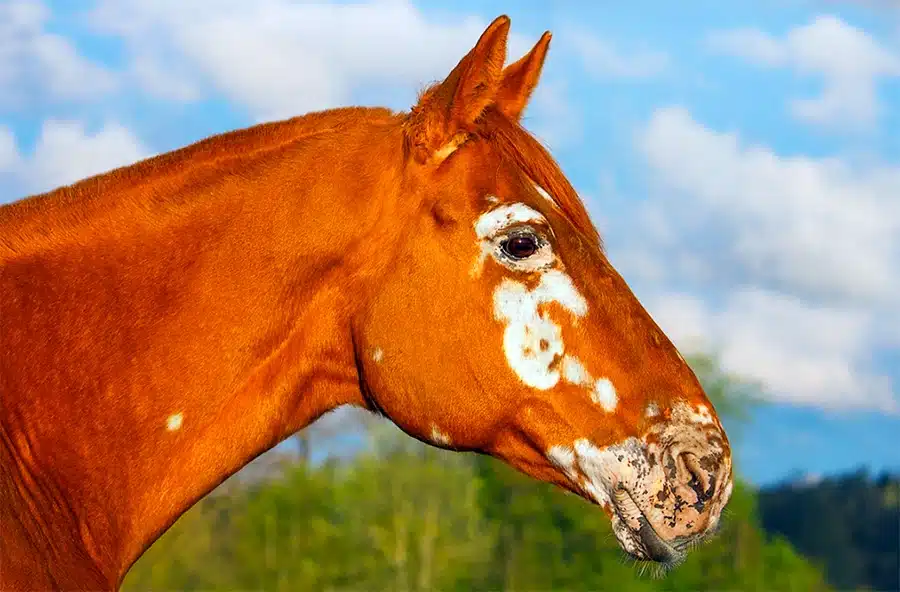
Vitiligo in Wild Animals
Vitiligo in wild animals is a fascinating phenomenon, though it is not as thoroughly documented as in domestic species.
This condition manifests as depigmented patches on the skin, which can be particularly conspicuous in species with darker or more varied colorations. In the wild, these striking white patches can sometimes affect an animal’s camouflage, potentially increasing visibility to predators or affecting their hunting stealth.
A Penguin with Vitiligo:

A Black Leopard with Vitiligo:
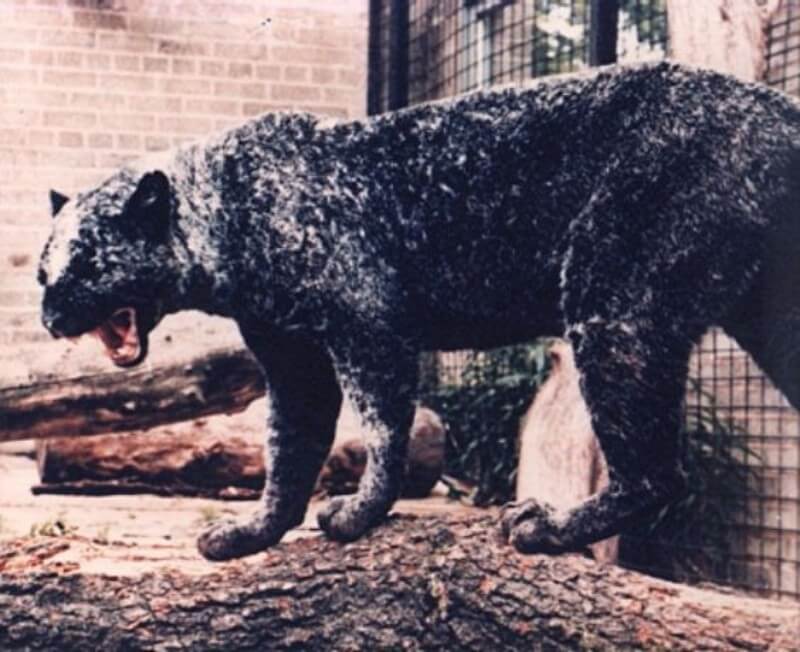
A Giraffe with Vitiligo:

A Chimpanzee with Vitiligo:
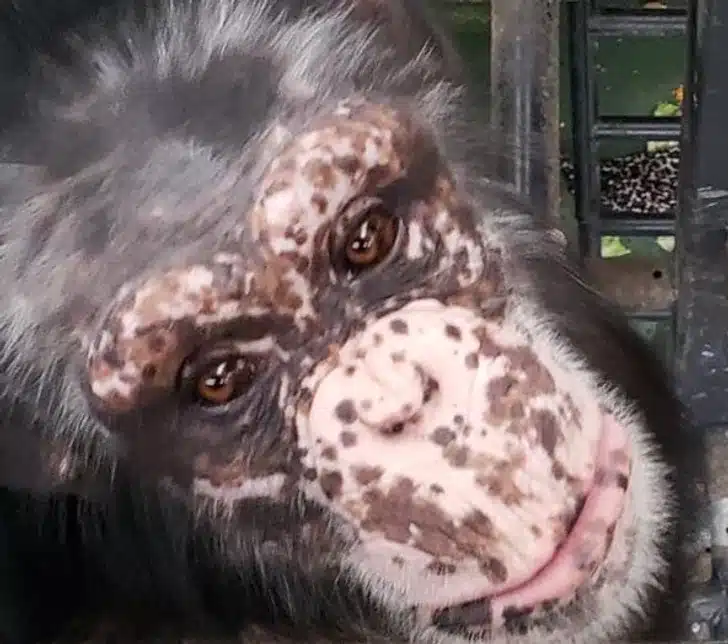
Comparative Occurrence in Animals vs Humans
Although vitiligo is less commonly diagnosed in animals than in humans, certain breeds like the Belgian Tervuren, Rottweiler, Old English Sheepdog, and Siamese cats are more frequently documented cases. The comparative prevalence in animals versus humans suggests genetic factors contribute significantly to the occurrence of vitiligo across species.
Diagnosis and Health Considerations
When suspecting vitiligo in animals, a definitive diagnosis by a professional is essential, and the implications for the animal’s overall health should be carefully considered. Animals with vitiligo may experience more than just cosmetic changes – other health conditions could be associated with the depigmentation process.
Professional Diagnosis
A veterinarian will typically start with a thorough examination of the affected animal’s body and skin to identify the characteristic white patches indicative of vitiligo. A skin biopsy is often a key diagnostic tool, revealing a decrease or absence of melanocytes (the pigment-producing cells). It is vital to distinguish vitiligo from other conditions that may cause similar skin changes, such as autoimmune diseases or infections.
Associated Health Conditions
Vitiligo in animals, while primarily a cosmetic condition affecting the skin, can occasionally be linked to other systemic health issues.
Conditions such as hypothyroidism, liver disease, kidney disease, diabetes, pancreatitis, and demodicosis may sometimes be found in conjunction with vitiligo. One particular concern in canines is canine uveodermatologic syndrome, an autoimmune disorder affecting both skin and eyes.
Regular health check-ups are vital to monitor for any related conditions and ensure the continued well-being of your pet.
Treatment and Management
Treating Animals with Vitiligo
Since the condition is cosmetic and painless, management of Vitiligo often only revolves around protecting depigmented areas from sun damage because the loss of pigment can make the skin more susceptible to sunburn.
An article published by veterinarians on the National Library of Medicine (NCBI) points out that any interventions for cosmetic issues such as vitiligo should be discussed with the owners, particularly to avoid unnecessary treatments with dubious efficacy or potential side effects.
Unlike in humans, the depigmentation of the skin and fur caused by Vitiligo may not be permanent, and in some cases, like in rats, vitiligo may come and go. Rarely, even complete spontaneous repigmentation may occur.
Dietary and Supplemental Support
Dietary adjustments and supplementation could play a role in managing vitiligo, although their efficacy is not well-established. Supplements rich in vitamin C, vitamin D, and omega-3 fatty acids are sometimes recommended based on their antioxidant and anti-inflammatory properties. For instance, incorporating salmon oil as a supplement can provide omega-3 fatty acids, which may support skin health.
Vitiligo and Stress
Vitiligo is thought to be a hereditary condition and as such, it likely cannot truly be prevented. However, keeping the animal’s environment stable and stress-free can be beneficial. It’s suggested that stress may contribute to the spread of depigmentation, although this is not definitively proven. Therefore, ensuring the animal has a safe and calm environment can be considered an integral part of managing the condition.

Vitiligo Versus Other Pigmentary Conditions
Piebaldism vs Vitiligo
Piebaldism and vitiligo are both pigmentary conditions, but they have different causes and manifestations. Piebaldism is a genetic condition present at birth, characterized by unpigmented patches of skin and hair that remain constant throughout life. In contrast, vitiligo is an acquired condition, usually appearing later in life as a result of an autoimmune disorder, where pigmentation is lost over time, leading to expanding areas of depigmented skin and fur.
Albinism vs Vitiligo
Albinism is a genetic condition characterized by a complete or partial lack of melanin, the pigment that gives color to the skin, hair, and eyes, leading to a uniformly pale appearance and often sensitivity to sunlight. Vitiligo, on the other hand, is a progressive autoimmune disorder where melanin is lost in certain areas, resulting in irregular white patches of skin that contrast with the normal pigmented skin.
Leucism vs Vitiligo
Leucism is a genetic condition that results in reduced pigmentation in animals, affecting all types of skin pigment, not just melanin, and often leads to white, pale, or patchy coloration in the skin, hair, feathers, or scales. Unlike vitiligo, which develops over time and can increase in extent, leucism is typically present from birth and generally remains constant throughout the individual’s life.
Frequently Asked Questions
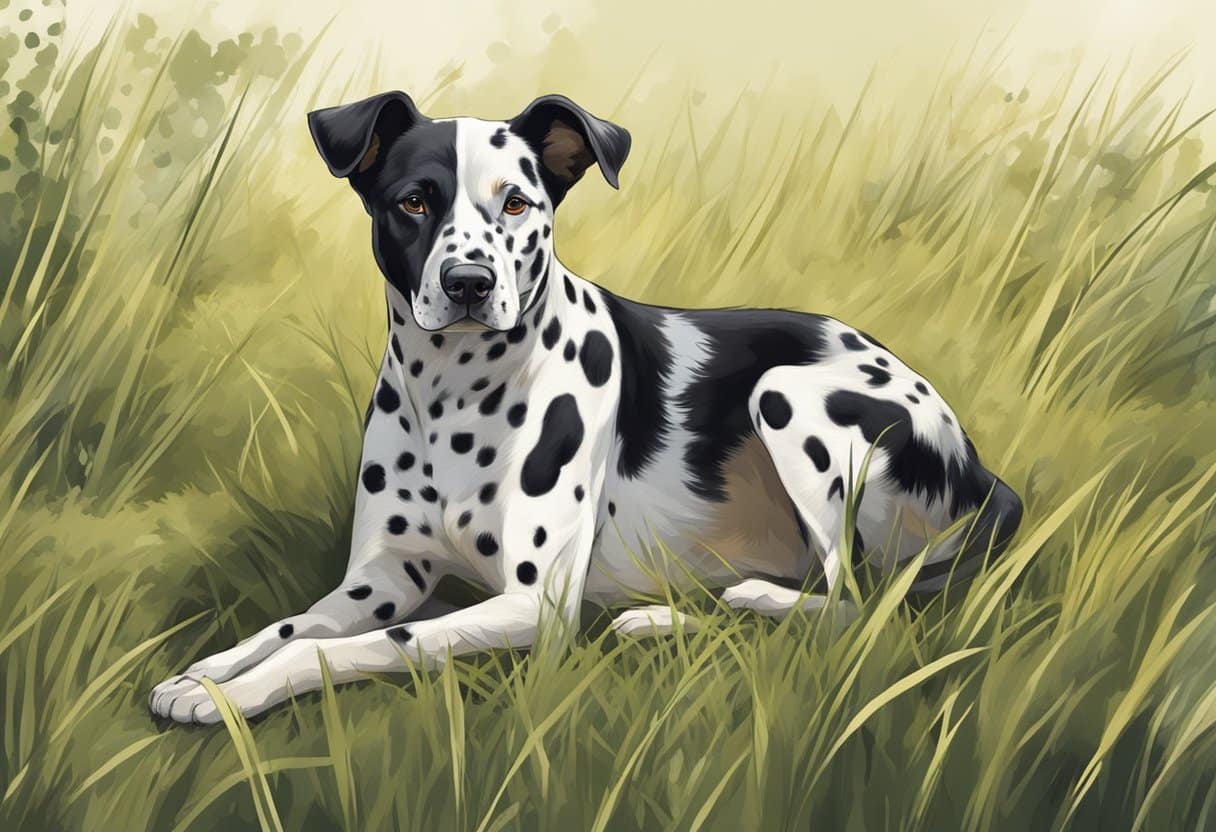
Understanding Vitiligo in animals can help owners better manage their pets’ health more effectively. Here are some common questions (and their answers):
Can vitiligo lead to health issues in dogs?
Vitiligo in dogs is primarily a cosmetic condition and typically does not cause other medical issues. It results in the loss of pigment on the skin and hair but does not affect the overall health of the dog.
What are the common symptoms of vitiligo in cats?
In cats, vitiligo manifests as irregular white patches on the skin or coat. The condition is often more noticeable on the face, particularly around the eyes and mouth.
How can I identify the early signs of vitiligo in dogs?
Early signs of vitiligo in dogs include small, white patches on the skin or fur. These patches may expand over time and can merge to cover larger areas.
What are the possible causes of vitiligo in household pets?
The exact causes of vitiligo in animals are not fully understood, but it is thought to be related to an autoimmune process where the body’s immune system attacks its own pigment cells.
Are certain breeds of cats more prone to vitiligo?
Certain cat breeds, including Siamese, are more predisposed to developing vitiligo. This implies that genetic factors play a role in the likelihood of this condition emerging.
Are certain breeds of dogs more prone to vitiligo?
Certain dog breeds, including Belgian Tervurens, Rottweilers, and Old English Sheepdogs, are more predisposed to developing vitiligo. This implies that genetic factors play a role in the likelihood of this condition emerging.
Does vitiligo affect livestock such as cows in the same way it does pets?
Like domestic pets, livestock can also exhibit vitiligo, which presents as depigmented patches on the skin. The impact is similar, being primarily cosmetic, without direct implications for the animal’s health.





